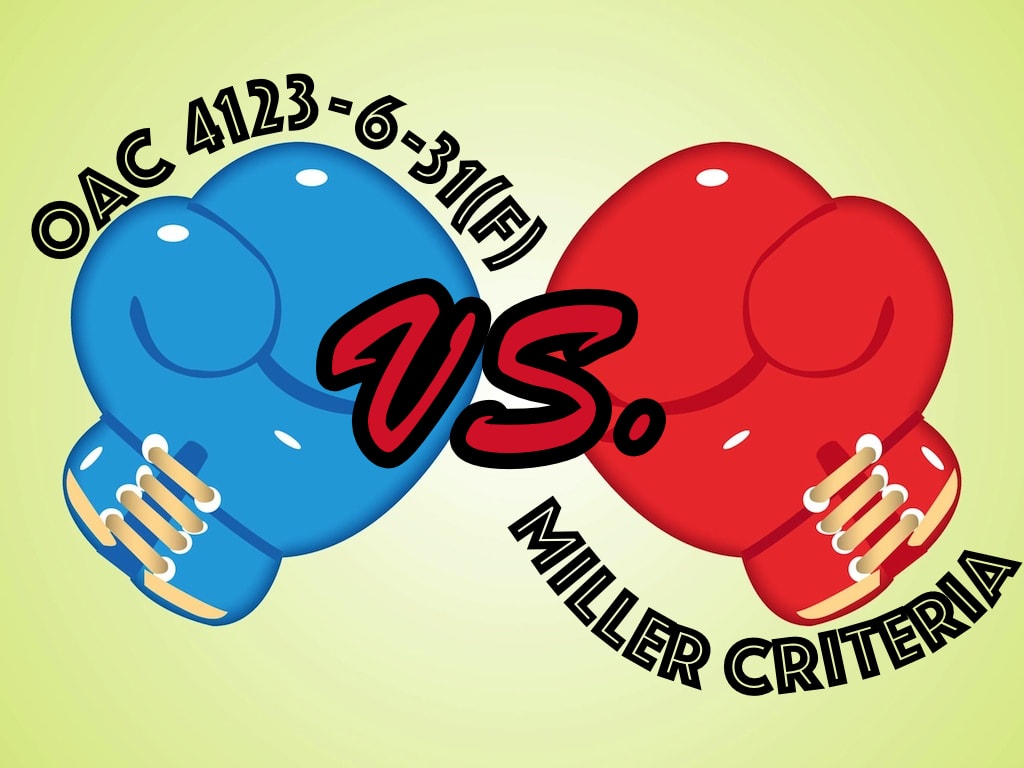The Setup
In the last entry we were talking about treatment and diagnostics. So lets assume that your doctor has submitted a C9 requesting two different things. For the sake of this example, the C9 will be requesting an MRI of the lumbar spine and an epidural steroid injection. Let us also assume the only allowed condition in the claim is a lumbar sprain.

So here’s the scenario, Joe the Warehouse Worker is packing inventory into cardboard boxes and carrying them over to a conveyor belt. Joe goes to pick up a box, as he is lifting the box he feels a pinch in his back. He continues working throughout the day and he continues to feel more pain and discomfort in his lower back. He tries going into work the next day, but he just cannot get up. Joe calls his boss and explains that he injured his back at the warehouse.
Joe goes to the emergency room. They prescribe some pain killers and muscle relaxers. Joe doesn’t really understand what to do next so he comes to us, the Columbus Workers’ Compensation Attorneys at Malek & Malek.
Without going into too much detail, which isn’t the focus of this particularly article, we get the claim allowed for a lumbar sprain. Lumbar Sprain is essentially the first condition that will be pursued in a back injury. Because when the injured worker goes into the emergency room or doctor office, the medical provider is not necessarily going to take an MRI or other expensive diagnostics where the injury occurred on the lifting of a heavy box. This might be different if the worker falls off a building.
So within the claim, a lumbar sprain is allowed. Joe has been taking pain killers for a number of weeks or months, but the sprain does not seem to be resolving itself. Thus the doctor submits a C9 requesting an MRI and epidural steroid injection. The Ohio Bureau of Workers’ Compensation has a physician conduct a file review. That doctor finds that the mri and injection are not appropriate per the Miller Criteria. The managed care organization denies payment for the treatment. We, the attorneys, appeal the mco’s decision. The BWC then submits this appeal to the Ohio Industrial Commission for a hearing.
“What is the Miller Criteria I keep on hearing about?” The Miller Criteria is a three-pronged test derived from the Ohio Supreme Court case Miller v. Industrial Commission. The three prongs are:
- the requested medical services are reasonably related to the industrial injury.
- they are reasonably necessary and appropriate for the treatment of the conditions allowed in the claim.
- the costs of the services are medically reasonable.
All three conditions must be met for the treatment to be authorized. So treatment is related and necessary for treatment of a condition might still fail if the costs are not medically reasonable.
So in our example of the C9 the Miller Criteria would be used to determine whether the epidural steroid injection is authorized or denied. The Official Disability Guidelines (“ODG”) may not recommend epidural steroid injections for lumbar sprains. In which case the reviewing doctor and MCO would find that, even though the epidural steroid injection is reasonably related to the work injury (pass on prong 1), the treatment is not appropriate per the ODG guidelines (fail on prong 2), and therefore the costs are not medically reasonable (fail on prong 3).
The problem for Joe is that the injections might alleviate his symptoms which are the result of a disc bulge. The work injury might, in fact caused a disc bulge, however disc bulge has not been added to Joe’s claim yet. So even if the doctor specifically states “the injections are directed at a disc bulge”, until this condition is added to the claim, the treatment will not be authorized.
Now we enter into the purpose and utility of diagnostics.
Ohio Administrative Code 4123-6-31(F)
The importance of this section is that it allows diagnostics to be utilized in order to find conditions which are not currently allowed within the claim. There needs to be some “medical evidence” to support the diagnostic. The Industrial Commission will not authorize just any random diagnostic. In Joe’s case it would be ridiculous for the doctor to request and MRI of the brain because the work injury did not in anyway impact Joe’s brain. On the other hand an MRI of the lumbar area (lower back) should be authorized particularly if there is documentation of objective signs of disc dysfunction. A objective sign of disc dysfunction might documented tingling and numbness down Joe’s legs. This would imply a disc is pressing against the nerves in the spinal cords.
So if Joe’s medical records document objective findings, and records Joe’s subjective complaints (i.e. the level of his discomfort), the lumbar MRI may be approved. If the lumbar MRI showed disc displacement/extruded disc/disc bulge then a motion can be made to add this physical condition to his claim. Diagnostic information can be very compelling evidence in terms of trying to get an additional condition added to a workers’ comp claim. On the other hand, an MRI could be harmful too to trying to add an additional condition to a claim, in the event that the resultant MRI shows nothing.
This is the value of diagnostics, and after a new condition is added to a claim, the appropriate medical procedures can be requested. So for instance if the disc bulge is added to Joe’s claim, epidural steroid injections might then be found to be appropriate per the Miller Criteria.
Conclusion
This is a quick overview of treatment, diagnostics, the Miller Criteria, and OAC 4123-6-31(F). Nothing is ever quite cut and dry. At the end of the day once something reaches the Industrial Commission, its up to the Hearing Officer. The hearing officer essentially acts as a judge and jury. Some hearing officers will not approve treatment unless something is 100% supported by multiple different pieces of medical evidence. Some are less stringent, and may place equal weight on the injured workers own testimony. Bottomline is the human factor adds an element of randomness to the whole process. Its a roll of the dice. Be that as it may, the Columbus Workers’ Comp attorneys at Malek & Malek will go above and beyond the call of duty to help you get the treatment and compensation you are entitled to.
